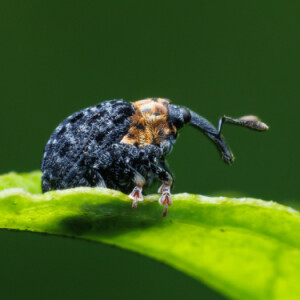Yarn bomb
"Oh wow!" said R. "That's amazing! It looks as if someone's crocheted it."
That was all the encouragement I needed to post the little guy, which is a Figwort Weevil (Cionus tuberculosus) - though to be fair, it's pretty likely I'd have chosen it for today's post anyway, because I do love a weevil, and this is an especially glorious species. I spotted it on the dogwood in the wild garden this morning, but because the weevil is only 4mm long, I was wearing middle-distance glasses, and the young dogwood shoot was whipping around in a gusty breeze, I really wasn't sure what it was I'd found. It didn't help either that my victim was nervous about being photographed.
Twenty minutes and a fluent stream of Anglo Saxon invective later, I'd captured just two focused photos - but because in the circumstances I'm quite pleased with myself for achieving even that, I'm posting both of them here. The second one is a closer view, but slightly spoiled by the tilt of the leaf, whereas the main image is less detailed, but better balanced. I think they both have something to offer.
Cionus tuberculosus is a common species in the south of England, but scarce further north, and I think Worcestershire is probably towards the northern limit of its range. It's found in damp environments at the edge of ponds, streams and ditches, and is said to be tied to the presence of one of its larval foodplants, which are common figwort (Scrophularia nodosa) and water figwort (Scrophularia auriculata). What's interesting about this is that although this isn't the first time I've found a Figwort Weevil in my garden, I have no figwort plants, and I don't remember seeing any elsewhere in the village either. One source suggests, tentatively, that the adults might feed on verbascums as well - but I don't have any of those either. However if I've learned one thing over the years I've been bug-bothering, it's this: invertebrates don't read books, and however well they've been studied and described they're still always liable to go off-piste and surprise you.
By the way, there's another species in the UK called Cionus scrophulariae, which also lays claim to being the Figwort Weevil. Some people say that the two are hard to tell apart, but I think those folk need to check that they're not simply wearing the wrong glasses.


Comments
Sign in or get an account to comment.


